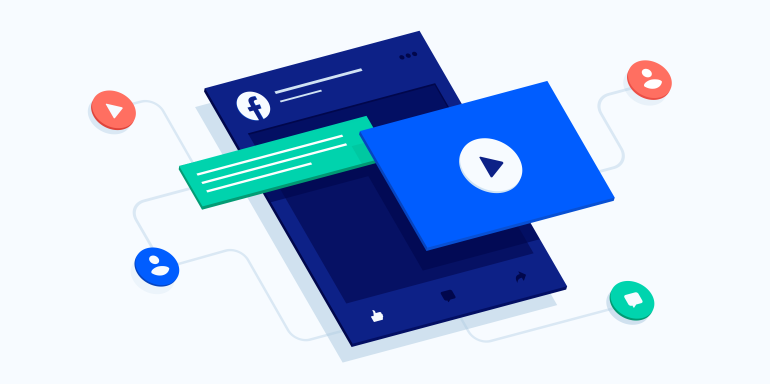- What is the voice of the customer?
- Why is it worth investing in VOC research?
- To stress a customer’s pain point
- To find advertising partners
- To find relevant influencers
- To source common customer questions
- To find your benefits
- To promote better customer testimonials
- To hyper personalize your ads
- To find your competitive edge
- To create a USP
- Final thoughts
Would you like to learn a secret? World-class product marketers, copywriters, and Facebook advertisers are not creative geniuses.
The idea that they sit at their desk and craft money-making copy is passé and outdated. Even the most famous marketers will confess they’re not that enlightened.
A marketer’s role is to serve their customers by understanding how the product or service solves someone’s problems. So when you write a Facebook ad or any other marketing material, you serve the customer by stating:
- What the customer wants.
- What the customer wants to avoid.
- What outcome the customer wants to receive.
As Neil Eneix of Fannit puts it,
Customers expect their experience to be customized to them and contextually relevant. Need-based sales is their North Star. Why not communicate that need to them, whether in your sales or ad copy?
This is known as the voice of the customer.
What is the voice of the customer?
Successful marketing copy does not come by addressing problems that don’t exist to explain product benefits that don’t matter. Instead, successful copy comes by…
- Talking to customers in interviews to get action-packed insights on real problems.
- Doing market research to discover the benefits customers want.
- Scouring and searching Amazon reviews, Reddit threads, and Discourse forums to learn what they suffer from.
Once you’re done, you can borrow their feedback and stories to put it together and create your next marketing campaign.
This is the process of gathering voice of customer (VOC) data.
Voice of the customer is the process of getting customer feedback to improve your marketing strategy. In this article, you’ll learn how to apply VOC data to your Facebook ads.
Why is it worth investing in VOC research to improve your Facebook Ads?
According to Aberdeen Group, the top 20% of businesses using VOC data grew by 9.8x year-over-year (48.2% vs. 4.9%):

You can use the voice of the customer to inform any part of your marketing strategy, from SEO to email to influencer marketing. That’s because VOC helps you to communicate your brand’s message across your marketing channels:
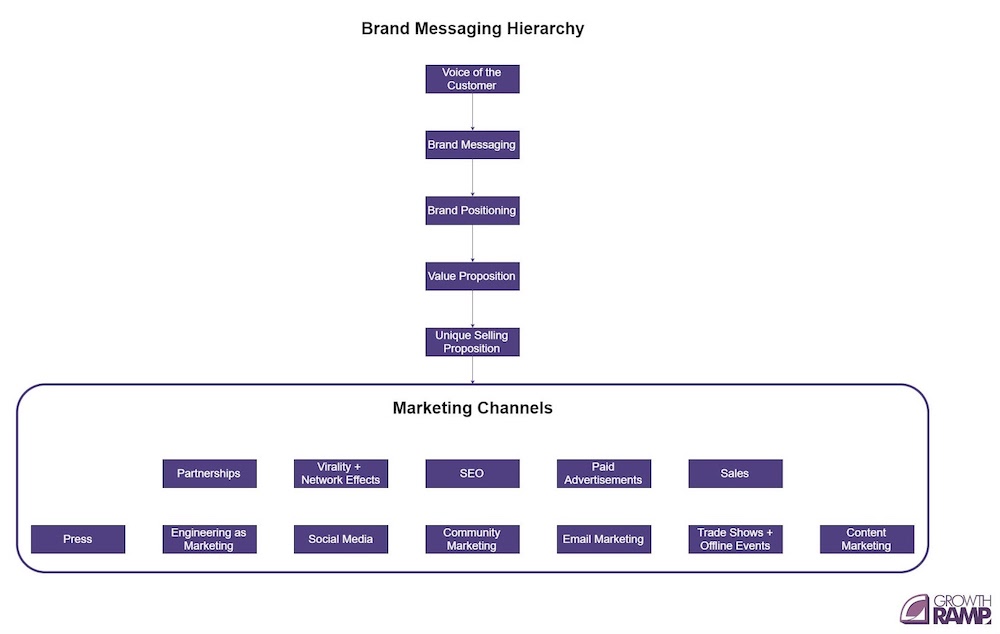
Below are ten successful Facebook ads that use the voice of the customer. Each example includes questions you can ask your customers to get better VOC data.
How to use VOC data to stress a customer’s pain
People are more likely to act to avoid pain than to get gain.
Would you rather receive a $5 discount or avoid paying a $5 fee?
One study by Amos Tversky and Daniel Kahneman suggests that losses are twice as powerful as gains. Psychologists call this loss aversion.
Loss aversion is a bias all humans have, which often causes us to feel it is better not to lose $5 than to find $5. One explanation of why loss aversion is powerful is because your customer wants to avoid pain.
If you know your customer’s pain points, you can highlight those in your Facebook ads like Procter and Gamble did:
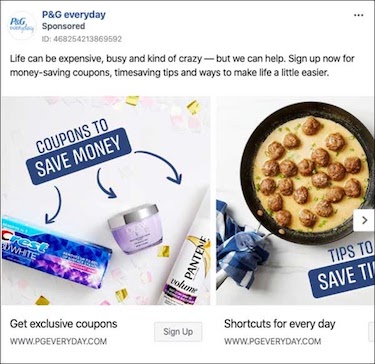
To learn the pain customers want to avoid, ask your customers:
- What was your biggest fear or concern right before you bought our product?
- Is there anything that almost stopped you from buying our product?
How to use VOC data to find ad partners
Andrew Chen of Andreessen Horowitz venture capital firm once identified five common ways to scale customer growth:
- Paid acquisition (e.g., Facebook ads)
- Virality
- SEO
- Sales
- Other, “the odd partnership, like Yahoo/Google.”
What would it look like to combine the “odd partnership” with Facebook ads? That’s what Verizon did in this next example:
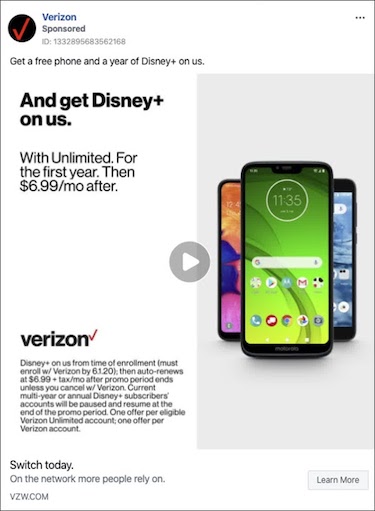
On a simple level, this increases Verizon’s offer to the customer. Click this ad and get a free phone and Disney+ for a year. On an acquisition level, Verizon could target Disney’s audience:
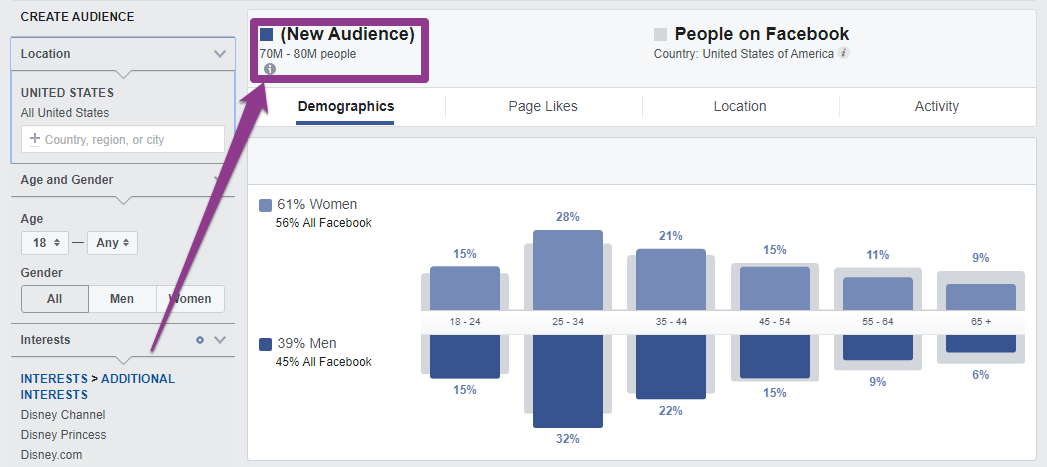
Perhaps you’re thinking, “I could never land a company like Disney to partner with me!”
Maybe not. Or perhaps you can collaborate with companies around your size and build your way up to a Disney-level partnership.
The important thing is to find an offer your customers would benefit from using that relates to your product (i.e., talk to your customers).
To find business partners, ask your customer:
- What other products do you use with our product?
How to use VOC data to find relevant influencers
A similar play to brand partnerships is working with influencers. In 2019, Influencer Marketing Hub found that, on average, campaigns focused on branding or engagements saw an 8x ROI.
Here’s an example of HelloFresh partnering with Jessica Alba:
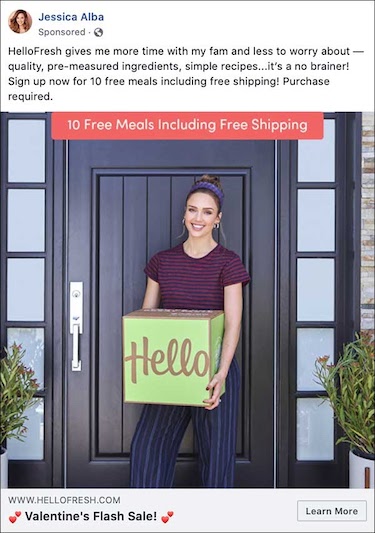
Like the Verizon and Disney+ example above, you can leverage both audiences to get a higher return. Also, like the Verizon and Disney+ example, it’s helpful if the influencer is relevant to your audience.
For example, if you sell soccer cleats and most of your customers are Barcelona soccer fans. You shouldn’t hire a rival celebrity from Manchester United. Nor is it likely as valuable to hire American football quarterback Russell Wilson.
Instead, you will likely have a higher ROI partnering with a Barcelona player like Lionel Messi. This example seems obvious, but that’s because this example infers you know your customers.
If you do work with influencers, be sure to disclose any necessary information. AdEspresso provides much what you need to know in their article on influencer marketing guidelines.
To find relevant influencers, ask your customers:
- Who are the experts respected in your industry?
How to use VOC data to source common customer questions
There is always something that blocks potential customers from buying from you. Otherwise, they would have already bought your product. If you find out what those questions are, you can then answer it using a Facebook ad.
Potential Soylent customers are asking what their products taste like. Some marketers would rather sweep problems like this under the rug. Soylent chose to face their customer’s problem with this Facebook ad:
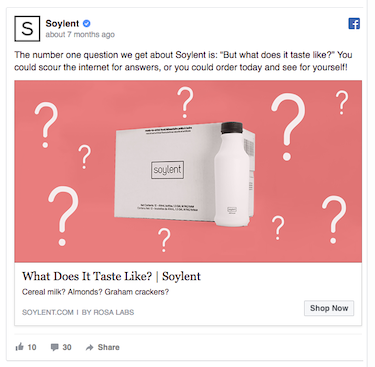
Soylent answers the conversation in their customer’s head by asking the question, “What does Soylent taste like?” They also understand that their customers are “scouring the Internet for answers.”
Consider testing this ad with one that sent traffic to a product review page, such as this review of Toptal. But at the end of the day, the only sure answer a customer will get is from buying Soylent.
To find your most common questions, ask your customers:
- What was your biggest fear or concern right before you bought our product?
How to use VOC data to find your benefits
You can also connect the benefit of your product to the primary problem. For example, MailChimp uses what customers say about their tool directly in their Facebook Ads. This helps differentiate its software in a crowded marketplace.
Take a look at this email tool comparison and notice the exact words they use:
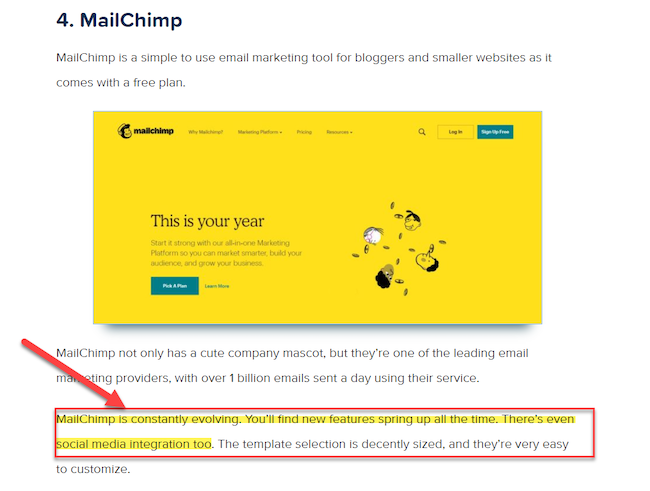
“MailChimp is constantly evolving. You’ll find new features springing up all the time. There’s even social media integration too.”
Now, take a look at this Facebook Ad from MailChimp:
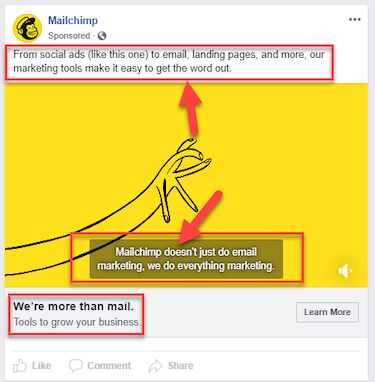
Using this VOC data, MailChimp leverages what customers value (e.g., new features) to land new users by stating the new features in their Facebook copy.
To find what benefits relate to your customer problems, ask:
- What has your life been like since using our product?
- What is the ideal outcome you want to experience after using our product?
How to use VOC data to promote better customer testimonials
When you talk to potential customers, it’s common for them to ask:
- What does your product do?
- Who is your product for?
- How will it help me?
- What specific results can I expect?
- Has anyone got these results before, preferably someone like me?
These are common fears, anxieties, or concerns potential customers have. This is why it’s valuable to add social proof to your marketing copy.
When we face fear or uncertainty, our instinct is to seek what people like us do. According to CRO consultant Angie Schottmuller, those other people customers seek are:
- Customers
- Suppliers
- Industry Experts
- Partners
- “Famous” People
- Employees
How can you use social proof to improve your Facebook ads? By turning customer testimonials into a Facebook ad.
Here’s an example from Infolinks:
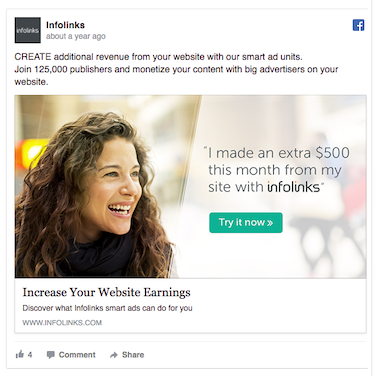
If you’ve asked customers for testimonials before, you know it can be challenging to get a benefit-driven message. They often sound corporate-y, like this:
“Growth Ramp is professional and communicative every step of the way. Their work was of high quality, and they’re very supportive of my organization’s initiatives, offering insights and advice along the way.”Instead, ask your customers about their experience using your product. Then summarize their response and send it over for approval.
To get customer testimonials, ask these three questions:
- How would you feel if you could no longer use our product? Why?
- What was your life like before using our product?
- What has your life been like since using our product?
How to use VOC data to hyper personalize your ads
By now, you know that personalization has become key in generating positive campaign results. This article includes several personalization statistics, for instance:
- 88% of U.S. marketers reported seeing measurable improvements due to personalization.
- 63% of millennials, 58% of Gen Xers, and 46% of Baby Boomers are willing to share their information to get personalized offers.
- 59% of customers say that personalization influences their shopping decision.
Before personalizing the post-click stage, a simple first step is to personalize your Facebook ads. Here’s an example of how Web Summit did this for Austrian startups:
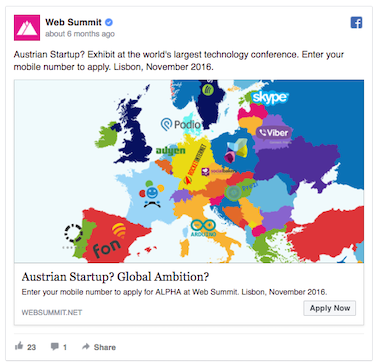
With your VOC data, you can create Facebook ads specific to each city, state, or country by changing a couple of lines of text. For example, the copy for an Italian audience would be: “Italian Startup? Exhibit at the world’s largest technology conference. Enter your mobile number to apply. Lisbon, November 2016.”
To personalize your ads, ask potential customers:
- What is your age?
- What is your gender?
- Where do you live?
- What are some of your favorite hobbies and interests?
How to use VOC data to find your competitive edge
From 2006 to 2009, Apple began to dominate Microsoft with their “Get a Mac” campaign. A month after the Mac vs. PC ads, Apple sold 200,000 Macs over the previous quarter. That’s roughly 18.2% more sales! By July 2006, Apple had sold 1.3 million Macs:
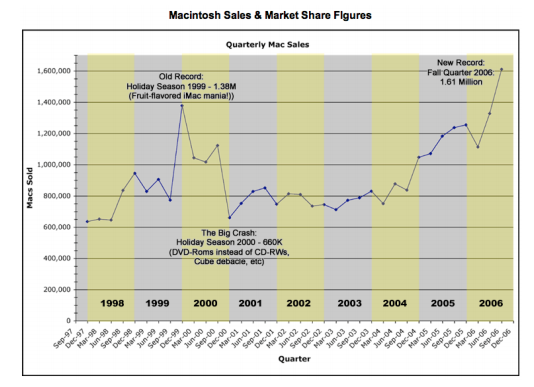
While Microsoft lost in that head-to-head battle, the comparison war was far from over. Here you can see Microsoft compares the features of Surface Book to the MacBook Pro:
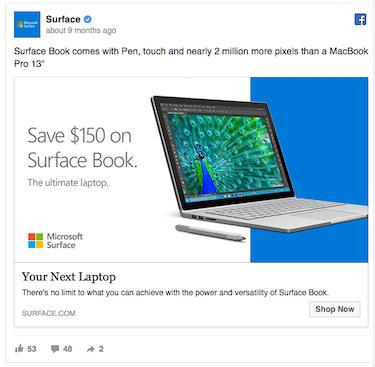
Campaigns that compare your product to a similar product are comparative advertising.
One could argue that Microsoft’s ad copy was weak, but it may not surprise anyone to learn it had a high return-on-ad-spend. In fact, comparative ads were a major reason Decibite doubled it’s annualized revenue.
Why engage in comparative advertising?
Comparative ads help comparison shoppers make an educated decision.
According to the copywriter Eugene Schwartz, comparison shoppers are the 2nd most likely customer to buy your product. In his book Breakthrough Advertising, Schwartz identified five stages of customer awareness. Here are the five stages, from least likely to most likely to buy:
- Unaware: A potential customer here is unaware of their pain, though he might find signs of a problem. This customer might Google, “What are the symptoms of the Coronavirus?”
- Problem-Aware: A prospect in this stage is experiencing pain. But she doesn’t know what’s the right solution.
- Solution-Aware: In this stage, a possible customer is reviewing solutions. He knows what he wants. Unfortunately, he does not know about your product. Or if he does, he doesn’t know it provides the results he’s looking for.
- Product-Aware: A comparison shopper here is comparing your product to other ways to solve her problem. But she isn’t sure which solution is right for her.
- Most Aware: This potential customer is ready to buy. Offer him relevant social proof, and he’ll buy today.
Pro-tip: You can also create comparison pages to educate comparison shoppers. Here are some examples of comparison pages:
To get data about your competitors, ask these questions:
- What competitors have you used previously, or are you using alongside our product now?
- What did you like most about them?
- What was your biggest complaint? Was that the reason you left them, or was there another reason?
- Pretend you were to talk to a friend about our product. What would you say about us that you’d be unlikely to say about any other competitor?
How to use VOC data to create a USP
No one likes sitting in on unproductive meetings. How you help potential customers remove themselves from workplace inefficiencies depends on your marketing approach.
You could write an article on how to create a work breakdown structure. Or you could take Slack’s approach with a Facebook ad by highlighting their unique selling proposition (USP):
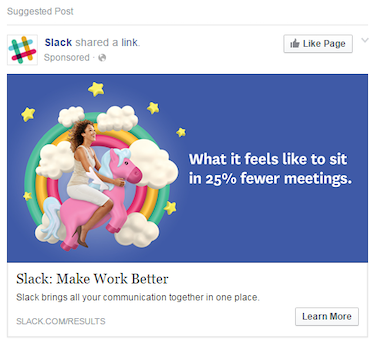
Why advertise your USP in Facebook ads?
Ad executive Rosser Reeves was famous for advertising with USPs. Some of his famous ad campaigns include:
- M&M’s “melts in your mouth, not in your hand.”
- Colgate toothpaste “cleans your breath while it cleans your teeth.”
- Anacin, a headache medicine for fast relief. (The same USP Advil borrowed 30 years later.)
While some thought Reeves’s ads were annoying, Anacin’s sales tripled in 18 months from $18 million to $54 million.
Here’s a quick summary of what to do when creating your USP:
- Talk to your customers (VOC) allows you to find the unique value your product provides. This also gives you the language they use (brand messaging).
- Find out what messaging resonates to define your brand’s positioning.
- Take your brand positioning and refine it into a value proposition.
- When your value proposition is unique to your brand, it becomes a USP. This is often by using a specific data point (e.g., “25% fewer meetings”).
- Share your USP through different marketing channels like Facebook ads.
Here is a quick way to visualize this process:
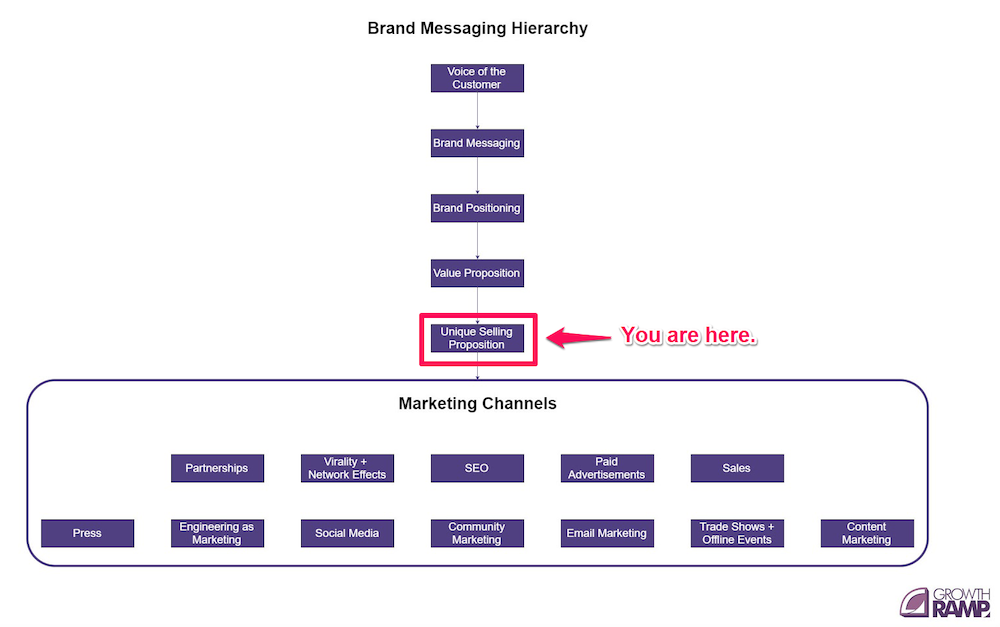
To establish your USP, ask these questions:
- What is the main benefit you receive from our product?
- How do you feel our product is different from competing products?
- What was important to you when you considered buying our product?
Final thoughts
Best-in-class marketers listen to their customers — using the voice of the customer — to craft persuasive ads that get results. From email responses to interviews, you’ll get unrivaled feedback in presenting your offer to future customers. Even better, it helps you better empathize with their frustrations. Once you have the VOC data, you can use it to enhance any part of your business, including your Facebook ads.

See the Instapage Enterprise Plan in Action.
Demo includes AdMap™, Personalization, AMP,
Global Blocks, heatmaps & more.
